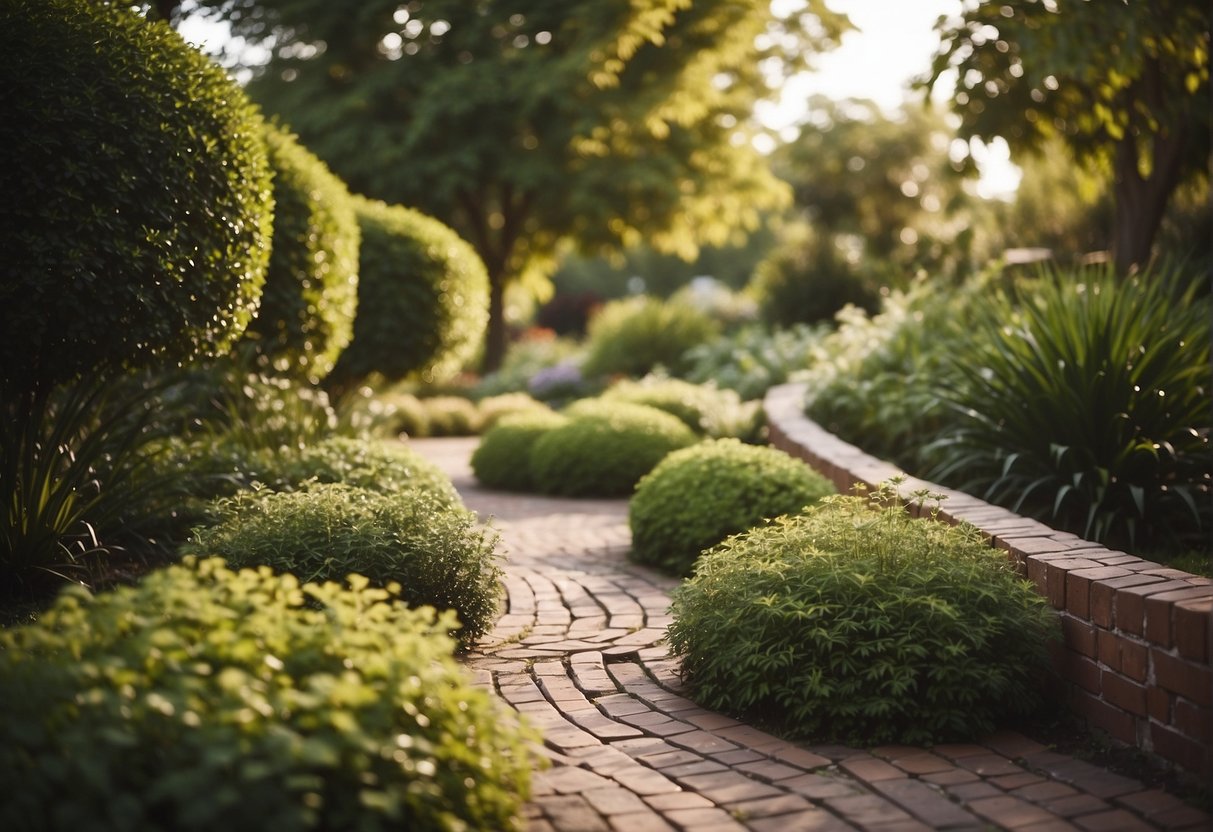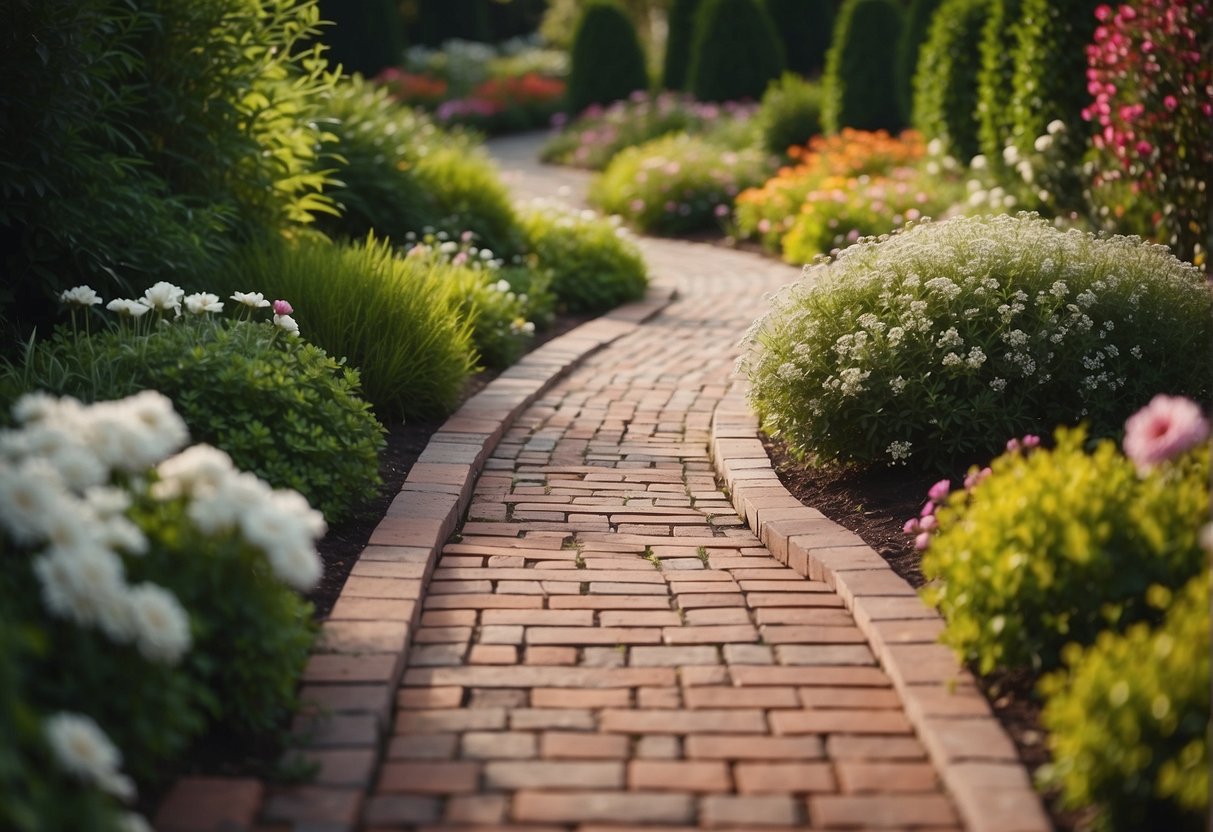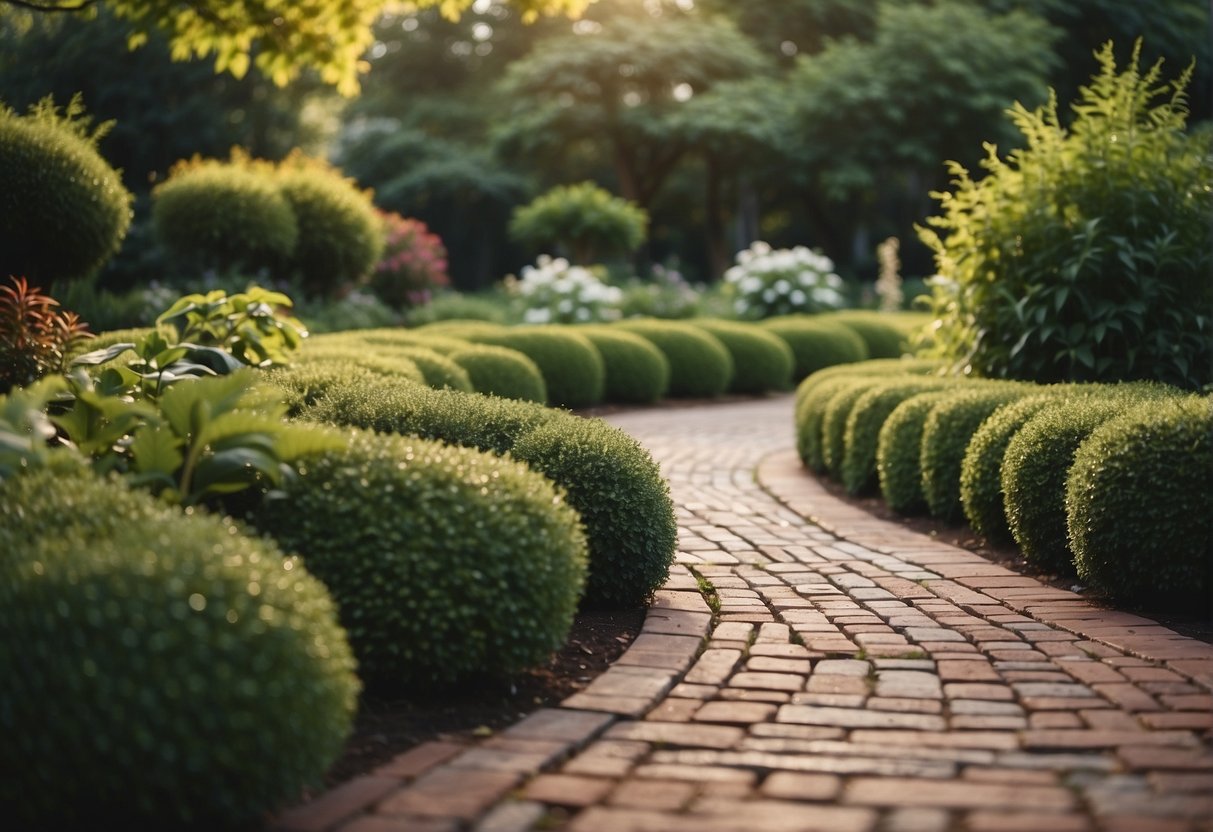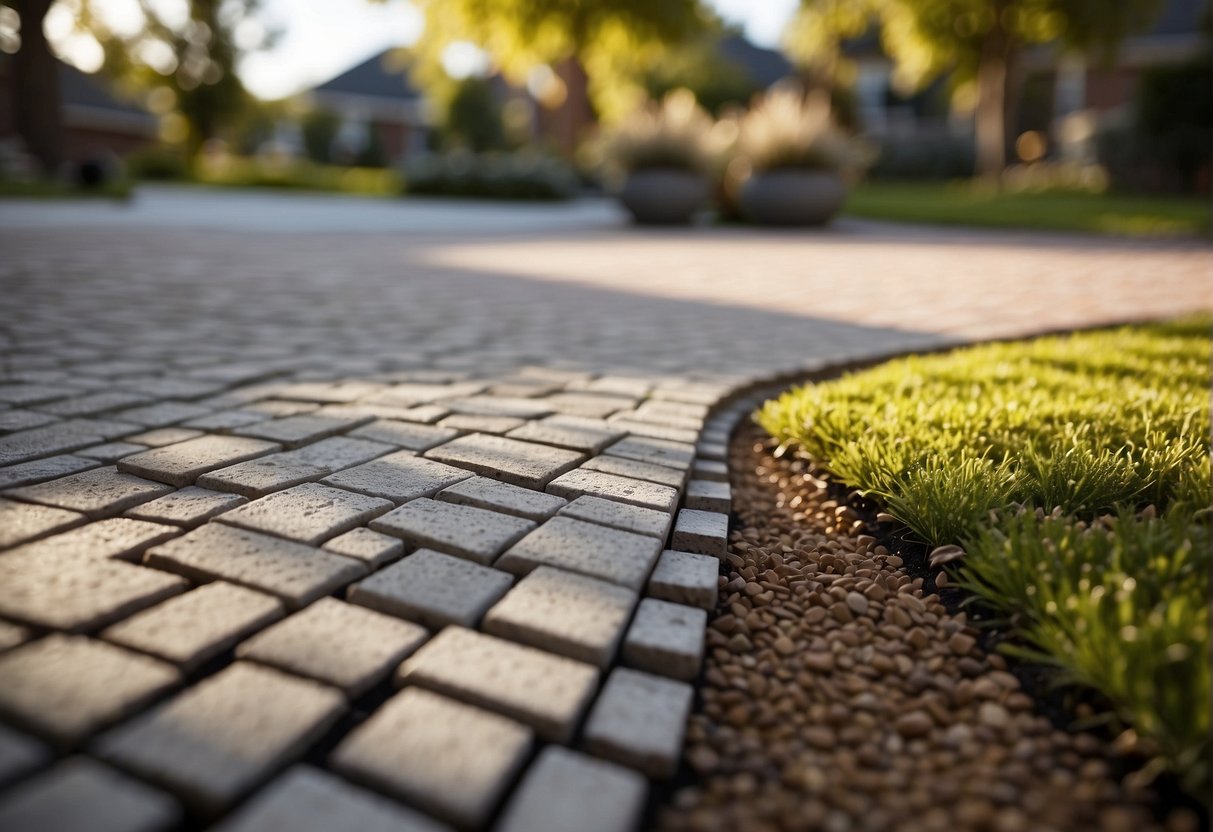Introduction to Brick Pavers

When we consider enhancing our outdoor spaces, the use of brick pavers is a robust solution for landscaping. Composed of a versatile, durable material, these pavers offer an aesthetic appeal paired with long-lasting quality. When we speak of brick pavers, we’re referring to the clay bricks commonly utilized to create walkways, driveways, patios, and other outdoor flooring.
Characteristics of Brick Pavers:
- Durability: Bricks are known for their strength and stand up well to heavy foot traffic.
- Maintenance: They require minimal maintenance and can last for decades with proper care.
- Aesthetic Appeal: With their natural color variation and classic look, brick pavers enhance the beauty of the landscape.
We often choose brick pavers for various reasons:
- Timelessness: Their classic look never goes out of style.
- Eco-friendly: Bricks are made from natural clay, making them an environmentally friendly choice.
- Adaptability: They fit with various design schemes and can be laid in multiple patterns.
When looking at our landscape, integrating brick pavers brings a cohesive and polished look to our outdoor space. We are not only investing in the visual enhancement but also in the functionality and longevity of our patios, pathways, and surrounding areas. By employing brick pavers in our landscape projects, we ensure a balance between charm and endurance, creating outdoor spaces that attract and last.
Aesthetic Benefits

We recognize that the visual appeal of outdoor spaces significantly influences the overall ambiance of any property. Through our use of brick pavers in landscaping, we enhance aesthetic benefits that include a blend of color versatility, natural beauty, and diverse textures.
Color and Pattern Options
Our selection of brick pavers offers a variety of colors, from traditional reds to mellow tans and greys. We can arrange them in multiple patterns to suit any design vision, ranging from the classic herringbone to the more intricate circular and basket-weave patterns. This versatility ensures that the aesthetic appeal of a landscaped area is both unique and harmonious with its surroundings.
- Colors:
- Reds
- Tans
- Greys
- Multicolored blends
- Patterns:
- Herringbone
- Circular
- Basket-weave
- Running bond
Natural Stone Aesthetics
We acknowledge the natural stone aesthetics that brick pavers emulate, which can elevate any landscape design. Their authentic look contributes to a contemporary design that emboldens curb appeal while still blending seamlessly with the environment. This quality enables us to create landscapes that offer both sophistication and a natural allure.
Texture and Shape Variations
Our brick pavers come in a range of textures and shapes, each adding a distinct touch to the landscaping palette. From smooth, sleek finishes to more rustic, weathered appearances, we can cater to a spectrum of design preferences. The different shapes available, including rectangles, squares, and more specialized forms, allow us to craft a space that is not just visually striking but also possesses a tactile quality that enhances the aesthetic appeal.
- Textures:
- Smooth
- Rustic
- Weathered
- Shapes:
- Rectangle
- Square
- Specialized forms
Durability and Longevity
We often choose materials for our landscaping projects based on their ability to withstand the test of time and elements. Brick pavers are a robust choice in this regard, offering exceptional durability and longevity.
Weather Resistance
Brick pavers have a high resistance to various weather conditions, from blistering summers to freezing winters. Their inherent strength allows them to endure without cracking under thermal expansion and contraction.
- Temperature Tolerance: Bricks are fired at high temperatures, making them virtually impervious to the heat and cold cycles that can split other materials.
- Color Retention: With a low tendency to fade over time, brick pavers maintain their color even when exposed to UV rays and rain.
Maintaining Brick Paver Integrity
The integrity of brick pavers is closely tied to their low maintenance requirements. Over time, their durability translates to cost-effectiveness due to reduced need for repair or replacement.
- Routine Maintenance: Regular sweeping and occasional rinsing can keep brick pavers clean.
- Long-Term Care: Sealing brick pavers can enhance longevity and protect against stains and moss growth, ensuring a pristine appearance for years.
- Strength: Brick’s composition provides a sturdiness that can bear heavy loads, suitable for driveways and walkways.
Our use of brick pavers in landscaping projects is a testament to their reliable, long-lasting nature, which guarantees both aesthetic and functional value over time.
Environmental Considerations

When we consider the impact of landscaping materials on our environment, brick pavers stand out for their sustainability and rainwater management capabilities.
Sustainable Materials
Brick pavers offer a compelling environmental advantage due to their durability and longevity. We recognize that they are often crafted from natural clay materials, sourced from the earth and fired in kilns. The process embraces energy efficiency practices, and as a result, pavers have a longer life cycle compared to other materials, which reduces the need for frequent replacements.
- Eco-friendly aspects:
- Natural composition: Typically composed of shale and clay.
- Recyclability: Old bricks can be reused or crushed for new construction projects.
Rainwater Management
An important facet of our landscaping should be proper rainwater management. Permeable pavers, a type of brick paver, allow water to filter through joints or the material itself, mitigating runoff and enabling natural water cycles.
- Permeable benefits:
- Reduction in runoff: Diminishes the impact on local drainage systems.
- Replenishing groundwater: Water is naturally filtered back into the soil.
Through utilizing permeable pavers, we also promote the balance of the ecosystem by supporting the growth of vegetation, vital to both the beauty and health of our landscapes.
Installation and Maintenance

When we discuss brick pavers in landscaping, we emphasize not only their aesthetic appeal but also the straightforward installation and low maintenance they require. These qualities make brick pavers a practical choice for many homeowners who are looking at a durable outdoor surface option.
Installation Process
To begin the installation of a paver patio, pathway, or other landscaping feature, we first prepare a solid paver base. The base typically consists of layers of gravel and sand which are crucial for a stable foundation.
- Excavation: We dig to the desired depth, generally around 7-9 inches, to accommodate the base, sand, and paver thickness.
- Base Material: A layer of crushed gravel is spread evenly and then compacted. This creates a strong foundation that promotes drainage.
- Sand Layer: We add a layer of fine sand over the gravel base to fill in the gaps and create a level surface.
For laying the pavers, we follow these steps:
- Placement: Pavers are placed according to the chosen pattern, leaving a small gap between each brick.
- Cutting: When necessary, pavers are cut to fit the edges or around obstacles.
- Filling: The gaps between pavers are filled with sand, helping to lock them in place.
A DIY project for paver installation is achievable; however, it requires attention to detail and labor.
Low Maintenance Advantages
Brick pavers boast significant low-maintenance advantages, which makes them preferable in landscaping.
- Durability: They withstand weather and traffic without significant wear. This durability leads to fewer repairs over the long term.
- Ease of Cleaning: Simple washing or sweeping is adequate to keep pavers looking good.
- Replacing Pavers: If damage occurs, we can replace individual pavers without disturbing the entire area.
It’s important to reapply sand in the joints occasionally and sealing may be desired to enhance color and longevity. The overall low maintenance requirements make brick pavers an advantageous and reliable choice for our landscaping projects.
Cost Considerations
When considering the use of brick pavers for landscaping, we must weigh the initial investment against the long-term benefits. Let’s examine the costs of materials and understand how brick pavers can be a cost-effective choice in the landscape design.
Upfront Cost vs. Long-Term Value
The upfront cost of brick pavers is often higher than options like concrete slabs; however, the long-term value is where brick pavers shine. We need to consider their durability and lifespan, which often results in fewer replacements over time. Brick pavers are a lasting investment and can potentially increase the value of a property due to their aesthetic appeal and resilience.
- Upfront Cost: Typically higher than concrete
- Longevity: Longer lifespan reduces long-term expenses
Comparing Material Costs
In a direct comparison of material costs, we see how brick pavers and concrete vary, influencing our overall budget.
| Material | Initial Cost | Maintenance | Aesthetic Value | Durability |
|---|---|---|---|---|
| Brick Pavers | Higher | Low | High | Long-lasting |
| Concrete Slabs | Lower | Moderate | Moderate | Prone to cracking |
Brick pavers might have a higher initial cost compared to materials like concrete, but they offer a low-cost maintenance plan and are a cost-effective investment for the longevity and aesthetics they bring to landscaping projects. Concrete can be more affordable initially but often carries higher lifetime costs due to cracking and reduced lifespan.
Design Flexibility and Versatility
Brick pavers offer unmatched design flexibility and versatility, accommodating a wide range of patterns and applications from driveways to decorative pathways.
Versatile Layouts and Uses
Shapes and Sizes: We can choose from a multitude of brick shapes and sizes, allowing us to create intricate patterns or simple, strong layouts.
- Driveways: Opt for herringbone patterns for strength.
- Walkways and Patios: Experiment with basketweave or circular designs.
Design Ideas: Employ a variety of colors and textures in pavers to complement the landscape design and enhance the overall outdoor aesthetic. Whether we are crafting meandering garden paths or erecting stately courtyards, our design options are abundant.
Incorporating with Other Landscaping Elements
Hardscaping: Integrate brick pavers seamlessly with other hardscaping elements, like edging and retaining walls, for a cohesive outdoor design.
- Steps: Ensure a fluid transition from one outdoor space to another by constructing steps that match or accent the surrounding pavers.
Landscape Design: Utilize brick pavers not just for their function but as an essential part of the overall landscape design, creating synergy between softscaping and hardscaping elements.
- Outdoor Spaces: Define outdoor spaces like outdoor dining areas or fire pits with distinctive paver designs, enhancing both the form and function of these areas.
Functional Advantages
Brick pavers offer undeniable functional benefits for a variety of outdoor spaces. We’ll focus specifically on drainage and slip resistance characteristics as well as how they aid in weed and pest control.
Drainage and Slip Resistance
Brick pavers are designed to provide excellent drainage, reducing water accumulation on surfaces such as driveways, walkways, and pool decks. Unlike solid surfaces like concrete, brick pavers are individual units with joints that allow water to percolate through. This not only prevents standing water but also minimizes the risk of slipping due to added traction.
- Driveways and Walkways: The textured surface of brick pavers contributes to non-slip characteristics, which enhances safety in areas susceptible to water or ice.
- Pool Decks: Given their natural drainage abilities, brick pavers are ideal for pool decks where water spillage is common, reducing slip hazards and making them a safe choice for these areas.
Weed and Pest Control
Weeds and pests can be problematic in landscaping. With brick pavers, the chances of weed growth are substantially reduced thanks to the close-fitting and interlocking nature of the pavers, leaving little room for weeds to take root.
- Stone Pavers vs. Concrete Pavers: Stone pavers generally provide tighter joints compared with concrete pavers, offering fewer opportunities for weeds to emerge.
- Pathways: For pathways, the sand-filled joints between brick pavers create a barrier to seed germination, impeding the growth of weeds and deterring pests naturally.
Creative Design Techniques
In landscaping with brick pavers, we can greatly enhance the visual appeal and functionality of our outdoor spaces by employing various creative design techniques.
Popular Brick Paver Patterns
Brick pavers enable us to create intricate and aesthetically pleasing patterns that can transform the overall look of any outdoor area. Patterns not only contribute to the visual aspect but also offer practical benefits such as durability and ease of maintenance. Here are a few popular patterns we often recommend:
- Basketweave: This classic pattern involves alternating pairs of brick pavers at 90-degree angles, creating a woven appearance. It’s suitable for areas where we want to evoke a traditional or rustic look.
- Herringbone: In a herringbone pattern, we set the brick pavers at 45-degree angles in a V-shape. This pattern is extremely strong and can efficiently handle vehicular traffic, making it ideal for driveways.
- Running Bond: We typically lay bricks end to end in a straight line with each row offset half a brick from the previous row. Running bond is simple, versatile, and perfect for creating long, linear lines across the landscape.
Each pattern offers unique benefits and can be chosen based on the specific needs and aesthetic goals of our landscaping project.
Combining Materials for Unique Designs
For a more innovative and custom look, we often combine different materials with brick pavers. Through our experience, these combinations not only offer an enhanced visual appeal but also create functional advantages.
- Natural Stone Inserts: Incorporating natural stones like flagstone, bluestone, or limestone can break up the uniformity of brick pavers and add a distinctive flair.
- Granite Edging: Using granite slabs or blocks as a border around brick paver installations can define spaces and add a touch of elegance.
- Mulch and Brick: By interspersing areas of mulch among brick pavers, we add organic contrast and improve soil moisture retention, which benefits surrounding plant life.
- Shale Accents: Shale can complement brick pavers in retaining walls or fire pits, providing a striking texture that highlights the smoothness of the clay bricks.
Mixing materials can also address functional issues, like using a more absorbent material around areas prone to spills or stains, making for easier cleanup and maintenance. Interlocking brick pavers, often made from clay that’s been fired in a kiln, provide durable surfaces that are simple to repair and can withstand harsh weather conditions. By utilizing these multifaceted design approaches, we enhance the charm and longevity of our landscaping projects.
Frequently Asked Questions
We have compiled a list of commonly asked questions to help you understand the advantages and considerations of using brick pavers for your landscaping projects.
How do brick pavers enhance outdoor aesthetics?
Brick pavers offer a classic, elegant look that can be tailored to various patterns and colors, blending seamlessly with the natural surroundings to enhance the beauty of outdoor spaces.
What maintenance requirements are associated with brick pavers?
Brick pavers require minimal maintenance. Regular sweeping and occasional rinsing are often enough to keep them looking clean. Sealing them can provide additional protection against stains and weathering.
How do brick pavers compare to other landscaping materials in terms of longevity?
Brick pavers are extremely durable and can last for decades when installed properly. They are less likely to crack compared to concrete and can withstand fluctuations in temperature and heavy traffic better than some other materials.
What environmental benefits do permeable brick pavers offer?
Permeable brick pavers allow water to pass through joints or holes, reducing runoff and promoting ground water recharge. They help manage stormwater, prevent erosion, and can improve water quality by filtering pollutants.
In what ways can paver patios increase property value?
Paver patios are a sought-after feature that can boost curb appeal and increase the resale value of a property. They create an attractive and functional outdoor living space which can be a significant selling point.
What should be considered when choosing between brick pavers and concrete pavers?
When comparing brick pavers to concrete pavers, consider the aesthetic differences, cost, and longevity. Brick pavers typically offer a more traditional look, while concrete pavers provide a wider range of design options. Brick may cost more but often delivers greater durability and timeless appeal.
